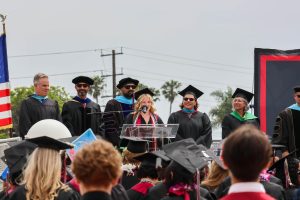Hispanic Heritage Month: A time to reflect on the Hispanic and Latinx impact in Ventura County
Sept. 15 marked the beginning of the National Hispanic Heritage Month, a complete 31 days dedicated to celebrating the legacy and influence of the Latinx community.
October 11, 2021
National Hispanic Heritage Month began on Sept. 15, 2021, in the United States, and it’s celebrated for 31 days in order to shed light on the history and influence of Latinx people in American culture.
Evolving from Hispanic Heritage Week in 1968 to Hispanic Heritage Month in 1988, the celebration begins on the Independence Day of Guatemala, Costa Rica, El Salvador, Honduras and Nicaragua. The month also includes Mexico and Chile’s Independence Day, which fall on Sept. 16 and Sept. 18, respectively.
It’s especially important to recognize Hispanic Heritage Month in California, a state in which 39 percent of the population is of Hispanic or Latinx descent. Hispanic culture is a large part of American daily life through food, languages, holidays, music, literature and more.
However, before the commencement of celebrations, it’s crucial to recognize the historic struggles that Latinx people have faced in American communities, including Ventura County. In Oxnard schools, Hispanic and Latinx students were segregated from white students on the playground, in classrooms and in bathrooms until the 1970s.
In David G. García’s “Strategies of Segregation,” García also notes that neighborhoods in Ventura County with large Hispanic and Latinx populations rarely had paved roads, sidewalks, electricity or working sewer systems, and the reminders still remain, as some of these neighborhoods don’t have sidewalks to this day.
Being aware of local Hispanic and Latinx history makes the celebration of Hispanic Heritage Month all the more valuable. Discriminatory policies against Latinx populations are not a long-forgotten thing of the past: they were in place only fifty years ago and many of the affected people are still alive today. Events like Hispanic Heritage Month are an important opportunity to raise awareness about Latinx history, while also having a chance to celebrate such beautiful cultures.
There are an abundance of Latinx and Hispanic-owned businesses to support in Ventura County. To name a few, restaurants that are local gems in Santa Paula include La Casita Mexican Grill and Tlaquepaque Restaurant. For gifts, La Catrina Folk Art on Ventura’s Main Street carries a variety of Mexican art and jewelry.
Celebrating Hispanic and Latinx culture is very important, especially in areas like Ventura where these populations have such a large presence. In order to fully understand and respect these cultures, it’s valuable to be aware of the history behind the modern Latinx presence in America. Uplifting Hispanic and Latinx voices, listening to their stories and valuing them as fundamental assets of American livelihood is of the utmost importance, during Hispanic Heritage Month and beyond.















